Not since 1949 has the near-mythical narwhal been seen in Western Europe and today we can report that a dead individual has washed ashore on the banks of the River Schelde in Belgium. It is the first record for the country.
Narwhals are sometimes called the “unicorn of the sea”, thanks to their distinctive tusk (present only in males), which may protrude some 2.5 metres in front of their bulbous head! The animals are usually found in high arctic waters, but very occasionally occur in the seas around the British Isles. They have been recorded in British waters on just six occasions between 1648 and 1949. This scarcity highlights the unusual nature of this North Sea sighting.
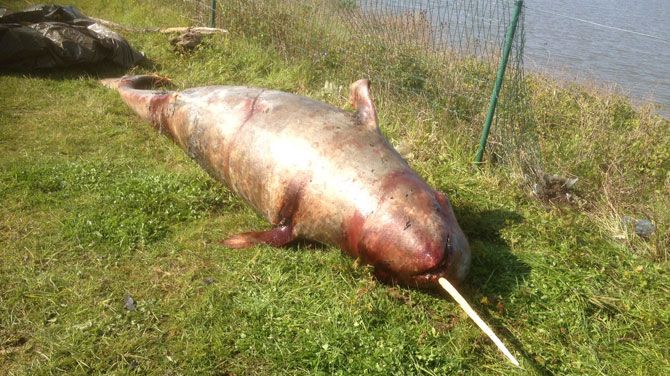 The narwhal found in Belgium. Photo credit: Koninklijk Belgisch Instituut voor Natuurwetenschappen
The narwhal found in Belgium. Photo credit: Koninklijk Belgisch Instituut voor Natuurwetenschappen
Found at Bornem in the Antwerp province of Belgium, the animal in question was a young male whose tusk measured just 50cm and the animal was a further 2.9 metres in length. The whale has now been taken to Ghent University for necropsy to determine the cause of death and the skeleton is intended to be kept in the Royal Belgian Institute for Natural Sciences in Brussels.
“The discovery of a narwhal in Belgium is very exciting as it is the first record in the North Sea, or indeed Western Europe in almost 70 years!” exclaims Dr Peter Evans, founder and director of Sea Watch Foundation.
Sea Watch Foundation monitors whales, dolphins and porpoises (collectively termed cetaceans) all around the UK, and contributes to informing policy on their conservation around Europe. Its sightings network allows members of the public to contribute to these efforts by reporting their own sightings to the research charity.
Historical records from Europe include one stranded on the Norfolk coast (UK) in 1588, one in the Firth of Forth (UK) in 1648, a female stranded in the River Elbe near Hamburg (Germany) in Feb 1736, a live stranding in Lincs (UK) in Feb 1800, a stranding in Yorkshire (UK) in 1806 (not yet confirmed) a stranding in Shetland (UK) in September 1808, a sighting off the Aberdeenshire (UK) coast in 1882, a female captured by a fisherman near a sandbank in the Zuider Zee (The Netherlands) in March 1912, and two females in the Thames Estuary (UK), one in Essex in Feb and the other in Kent in July, 1949, as well as two sighted off Orkney in June of that year. There have also been at least two records from the Baltic.
“This sighting is particularly significant as in the past 14 months we’ve had other arctic cetaceans visit our waters”, continues Dr Evans.
Back in February of 2014, an arctic bowhead whale was photographed in shallow waters off the Isles of Scilly. That sighting was the first for this kind of whale in the whole of Europe! Later in the year, during Sea Watch’s National Whale & Dolphin Watch week, a beluga whale was seen off the Antrim coast in Northern Ireland, and a matter of weeks later, two more belugas were filmed off the Northumberland coast.
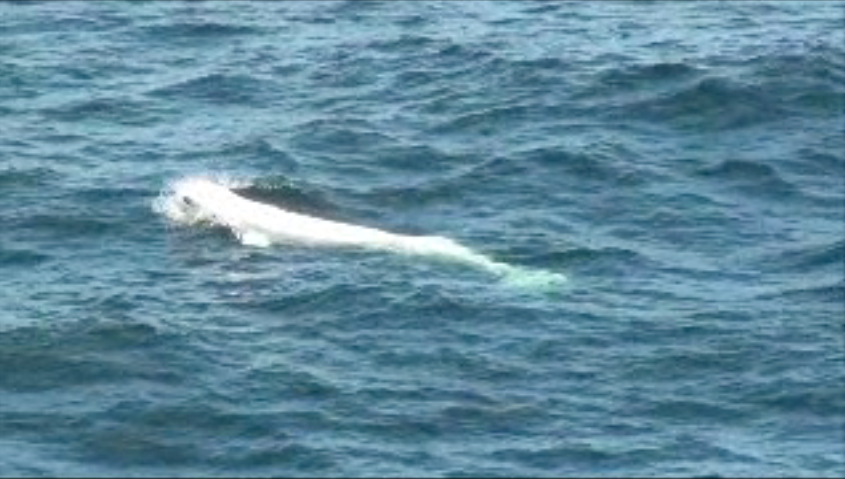 The beluga whale seen during the 2015 National Whale & Dolphin Watch.
Photo by Gordon Watson/ Sea Watch Foundation
The beluga whale seen during the 2015 National Whale & Dolphin Watch.
Photo by Gordon Watson/ Sea Watch Foundation
Dr Evans noted that “Sea temperatures were unusually low last spring. Sea surface temperatures in the north-eastern North Atlantic (between the British Isles and Iceland) early in the summer (May) of 2015 averaged more than one degree C lower than the average for the same period over the past twelve years.”
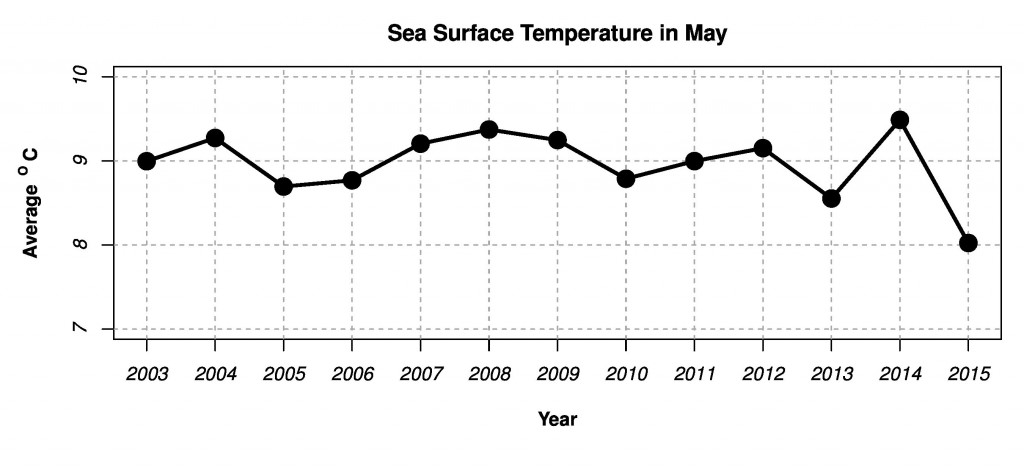
Figure 1. Average early summer sea surface temperatures
in the northeastern North Atlantic from 2003-15 (Source: MODIS NIR)
“It is also a possibility that the fragmentation of floating ice may have resulted in whales typically associated with pack ice, straying much further south”, added Dr Evans.
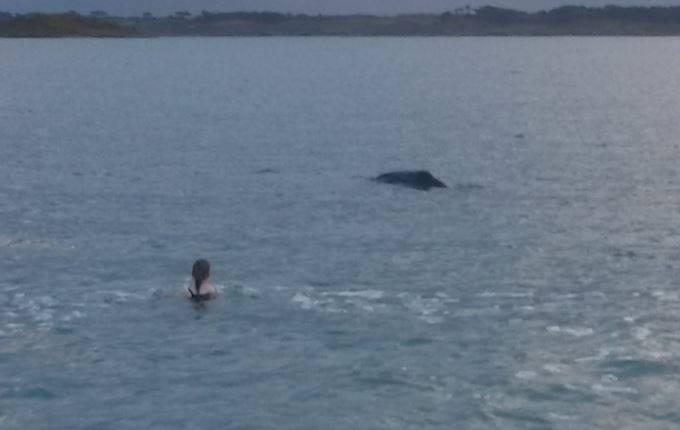 The bowhead whale seen off the Isles of Scilly – a first for Europe!
The bowhead whale seen off the Isles of Scilly – a first for Europe!
Photo by Fay Page/ Sea Watch Foundation
Narwhal facts
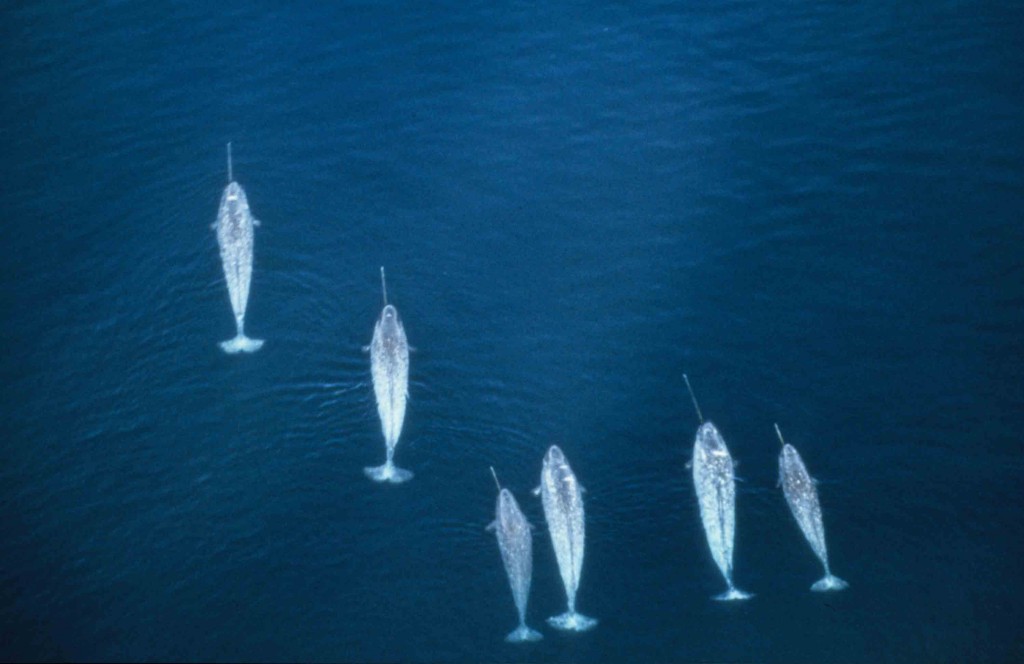 Narwhals in the arctic. Photo by A Martin/ Sea Watch Foundation.
Narwhals in the arctic. Photo by A Martin/ Sea Watch Foundation.
Scientific name: Monodon monoceros
Body shape: Blunt head, slight beak and no dorsal fin.
Distinctive features: Large protruding tusk (measuring up to 2.7m).
Colouration: Mottled grey-green, cream and black.
Size: Females 4.15 m (max), Males 4.75 (max).
Diet: Mainly Squid and fish such as cod and halibut.
Distribution: Mainly high artic, centres of distribution are E Canada/W Greenland and E Greenland/Svalbard/Franz Josef Land.
FOR PRESS ENQUIRIES OR FOR PICTURES PLEASE CONTACT: Dr Peter Evans on peter.evans@bangor.ac.uk or call 01407 832892
























